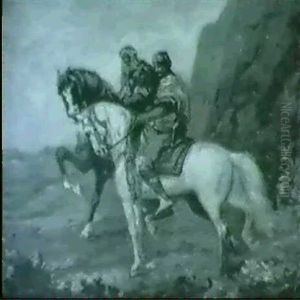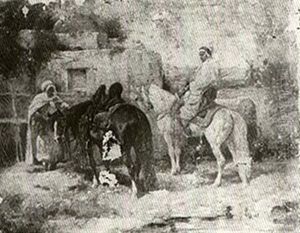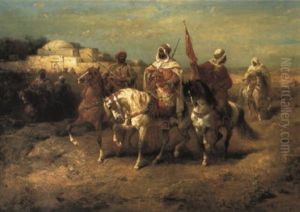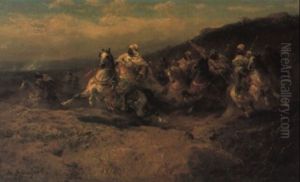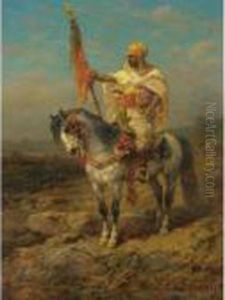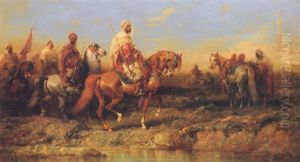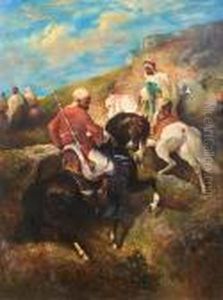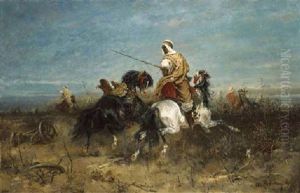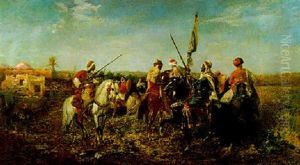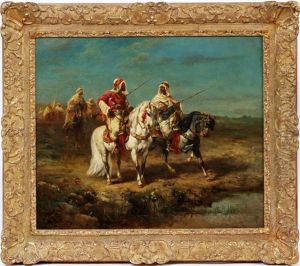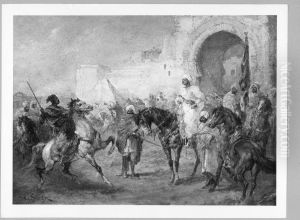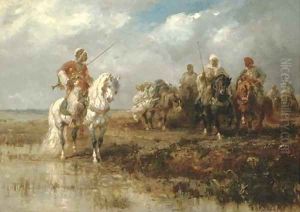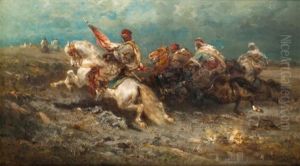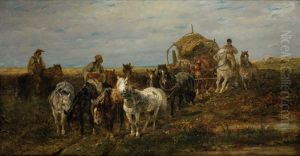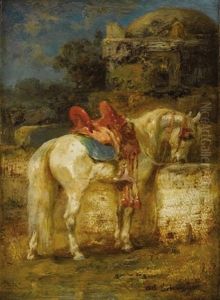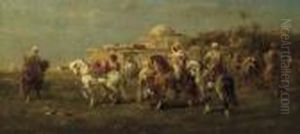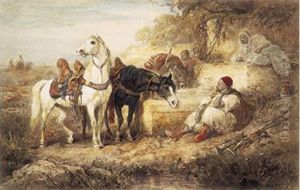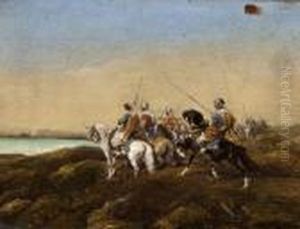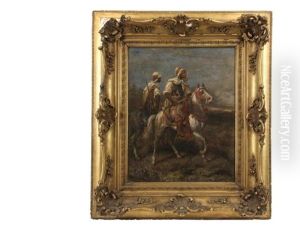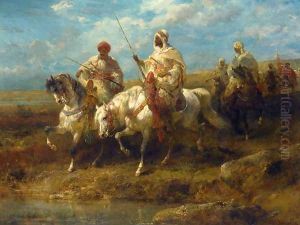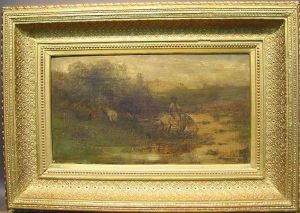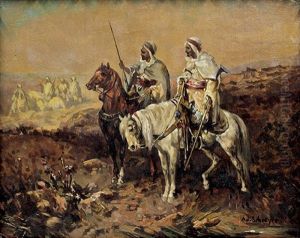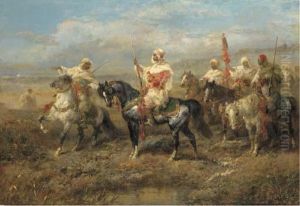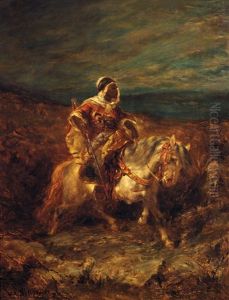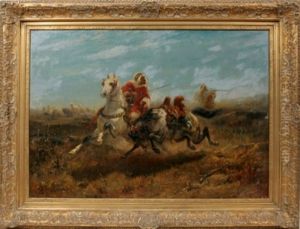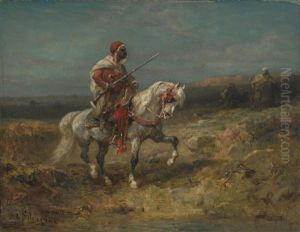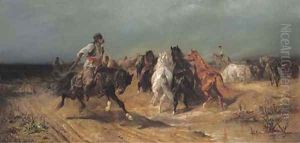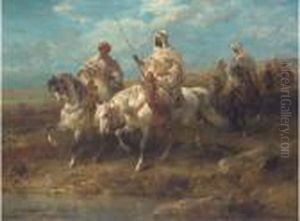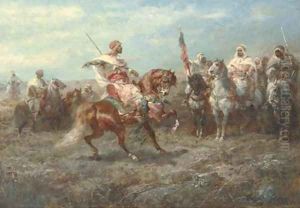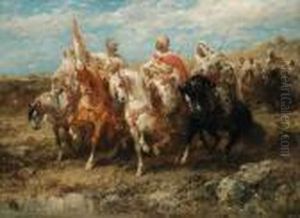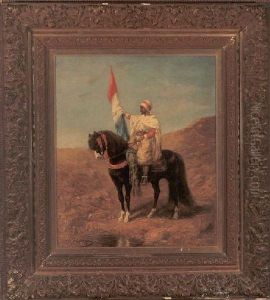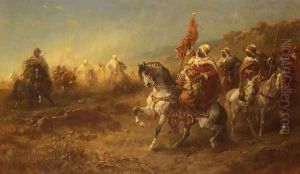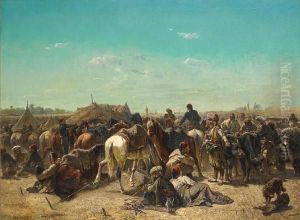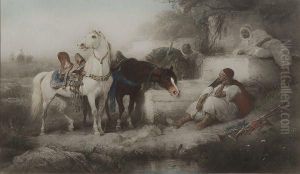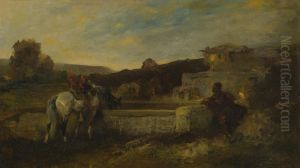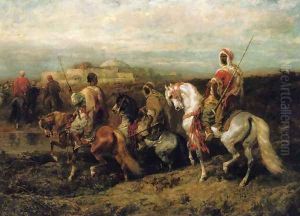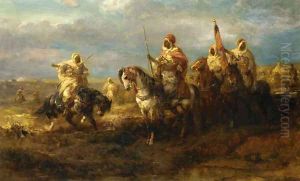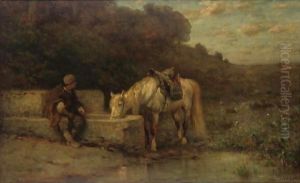Adolf Schreyer Paintings
Adolf Schreyer was a German painter, known for his stunning Orientalist scenes and depictions of horses in battle. Born in Frankfurt am Main, Germany, on July 9, 1828, Schreyer demonstrated an early talent for art, which was nurtured through his education. He studied art in Stuttgart, Munich, and Düsseldorf, where he was influenced by the Düsseldorf school of painting, a group known for its detailed landscape and historical painting.
Schreyer's travels through Europe and the Middle East profoundly influenced his artistic direction. After traveling to Hungary and Wallachia, he was captivated by the landscapes and the people, particularly the horsemen of the regions. His experiences in the Middle East, especially in Egypt and Syria, further enriched his palette and subject matter, leading him to adopt Orientalist themes that became a hallmark of his work.
Throughout the 1850s and 1860s, Schreyer established himself as a prominent figure in European art circles. He lived in Paris for several years, where he was associated with the Barbizon school, a group of artists who moved away from classical subject matters to paint rural and landscape scenes with a more realistic approach. His works from this period reflect a combination of his interest in the natural landscape and the dramatic flair of Orientalism.
Schreyer's paintings are characterized by their dynamic compositions, masterful use of color, and the ability to convey movement, particularly in his depictions of horses. His battle scenes, imbued with a sense of motion and emotion, were particularly admired and contributed to his reputation. Despite his German origins, Schreyer was well-received in France and participated in the Paris Salon, where he garnered significant acclaim.
Later in his career, Schreyer continued to paint and exhibit, although he began to face criticism for repeating themes and a perceived lack of innovation in his later works. Despite this, he remained a popular and influential figure in the art world until his death in Frankfurt am Main on July 29, 1899.
Today, Adolf Schreyer is remembered not only for his contributions to the Orientalist genre but also for his ability to capture the spirit and movement of his subjects, making his works sought after by collectors and admired by art enthusiasts around the world.
